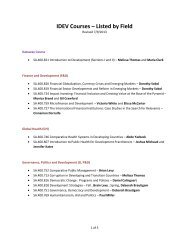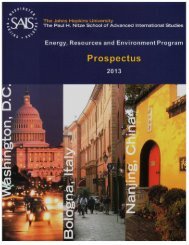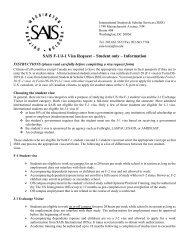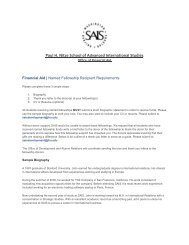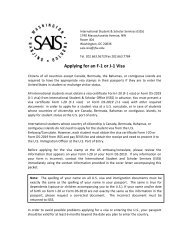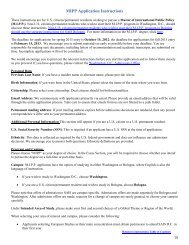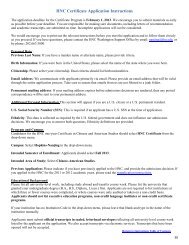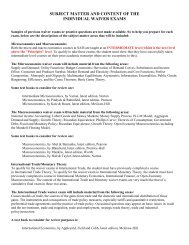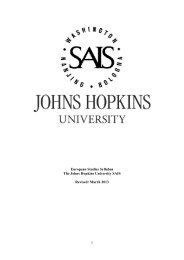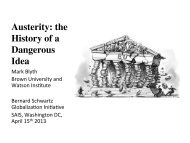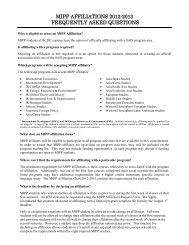Tunisia: Understanding Conflict 2012 - Johns Hopkins School of ...
Tunisia: Understanding Conflict 2012 - Johns Hopkins School of ...
Tunisia: Understanding Conflict 2012 - Johns Hopkins School of ...
Create successful ePaper yourself
Turn your PDF publications into a flip-book with our unique Google optimized e-Paper software.
the main obstacle to be overcome is high levels <strong>of</strong> public distrust <strong>of</strong> the out-going regime<br />
(Horowitz 2008, 21).<br />
The other major debate concerns the content <strong>of</strong> post-transition constitutions with<br />
regard to the configuration <strong>of</strong> institutions that they create. Understandably, given the even<br />
greater sensitivity to local contexts with respect to content, there are even fewer ‘best<br />
practices’ to follow despite the fact that, in the long-run, the content <strong>of</strong> a constitution will<br />
have a much bigger impact on its ability to mitigate conflict than the procedure through<br />
which it was reached. There are an endless number <strong>of</strong> possible configurations, and only<br />
some relevant examples will be mentioned here. For example, Horowitz mentions the<br />
trade-<strong>of</strong>fs associated with the ‘consociational’ model <strong>of</strong> democracy which aims to<br />
achieve governance through grand coalitions where all major groups are represented<br />
(Horowitz 2008, 3). While this has appealing characteristics, particularly its inclusiveness<br />
and attempt to build consensus, there are some drawbacks to this model as well. Not only<br />
does the policy process typically become very complex, but the willingness <strong>of</strong> moderate<br />
leaders to form cross-group coalitions can incite a backlash from their own group and,<br />
eventually, lead to the formation <strong>of</strong> fringe groups which tend to be more extreme.<br />
Where the precise nature <strong>of</strong> the institutions is under debate, Horowitz concludes<br />
that at the least constitution drafters ought to aim for coherence <strong>of</strong> design. However, he<br />
notes in parallel that “the process <strong>of</strong> making constitutions…is much more conducive to<br />
partial or even conflicting innovations than it is to the adoption <strong>of</strong> coherent designs<br />
whose elements reinforce each other” (Horowitz 2008, 15). This, combined with<br />
Widner’s observation that conflict resolution and constitution writing <strong>of</strong>ten espouse<br />
conflicting imperatives (Widner 2008, 1533), highlights the delicacy <strong>of</strong> the posttransition<br />
constitution-writing process and will help us to identify potential pit-falls in<br />
<strong>Tunisia</strong>. Indeed, in his paper, Weiner argues that “in societies in transition, efforts to<br />
resolve deep divisions or fundamental disagreements about the nature <strong>of</strong> society through<br />
constitutional drafting may sharpen political differences and heighten the political<br />
salience <strong>of</strong> controversial issues or social cleavages” (Weiner 2011, 9).<br />
84



